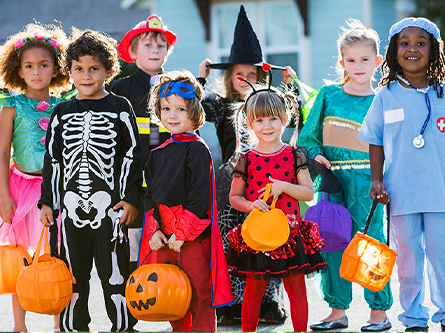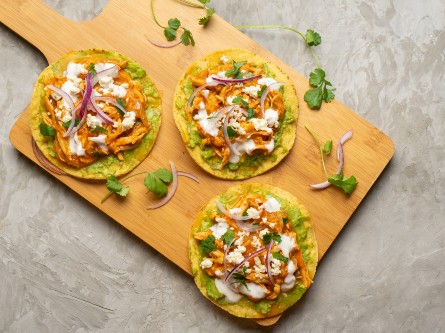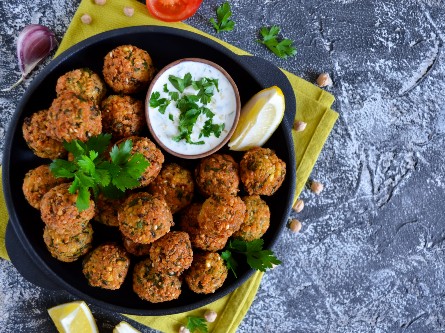Halloween is an exciting time of year where children dress up and are gifted with mounds of sugary candy. Parents are often more conscious of what their kids are getting from strangers these days, and we've all heard the scary news stories of sharp objects ending up in a child's trick-or-treat bag.
To help keep your children safe, our pediatricians offer some tips to help ensure a healthy Halloween for you and your family:
Children should eat a good meal before parties and trick-or-treating. This will help prevent kids from filling up on sugary Halloween treats.
After trick-or-treating, adults should sort and check all treats. Throw away any spoiled, unwrapped, or suspicious items. Look out for snacks and treats that may seem "healthier," but still contain added sugars, such as granola bars, juices, and fruit gummy snacks.
Parents should ration treats over the weeks following Halloween to prevent upset stomachs and sugar overload.
See a list of pediatricians and specialists
How to protect children with food allergies
To avoid any food allergy scares, always read the ingredient label on any treat your child receives. Many popular Halloween candies contain some of the most common allergens, such as peanuts or tree nuts, milk, egg, soy or wheat. If the ingredients are not listed, consider arranging for a treat "exchange" with classmates or friends, or swapping treats for a prize from the "Treat Fairy."
Be aware that even if ingredients are not listed on the label, there is an increased risk that candies contain trace amounts of common allergy triggers because factories often produce many different products.
"Fun size" or miniature candies may have different ingredients or are made on different equipment than regular size candies. This could mean that brands that your child previously ate without any problems could cause an allergic reaction.
Explore our pediatric guidelines and diagnosis for children with food allergies
Consider non-edible Halloween goodies
A good alternative to candies are non-edible goods. Consider offering alternative goodies to trick-or-treaters who visit your home. These can include: glow sticks, spider rings, pencils, crayons, bubbles, bouncy balls, finger puppets, whistles, bookmarks, temporary tattoos, stickers, stamps, and stencils.
For food-free fun, consider planning an event other than trick-or-treating, such as slumber parties or get-togethers to watch spooky, age-appropriate movies. Center parties around festive activities such as costume parades, pumpkin decorating contests, Halloween-themed games, crafts, scavenger hunts or storybooks.
Sign up for our Health Highlights e-newsletter
Babies will love these fall treats
If your baby is 6 months or older and is just starting solid foods, you can get them into the Halloween spirit with some pumpkin purees. Whether canned, frozen or fresh, pumpkin is packed with nutrients such as beta-carotene, vitamin A, potassium, vitamin C, and calcium. Other fall-themed options include butternut squash, sweet potato, or roasted apple purees.
For older toddlers, healthy seasonal treats may include soft bites of roasted apples or apple sauce, baked sweet potato fries dusted with cinnamon, apple zucchini muffins, pumpkin-inspired smoothies, or fruit ice pops made with fun Halloween molds.
Keep in mind that babies and toddlers should not have any hard candies, caramel apples, popcorn, gum, small candies (jelly beans, etc.), gummy candy, pumpkin seeds, or anything with whole nuts.
Be aware of other choking hazards such as candy wrappers, stickers, small toys, or temporary tattoos and always keep an eye on what your child has in their mouth while on the trick-or-treat trail.
Enjoy the fall festivities and have a happy and healthy Halloween!




